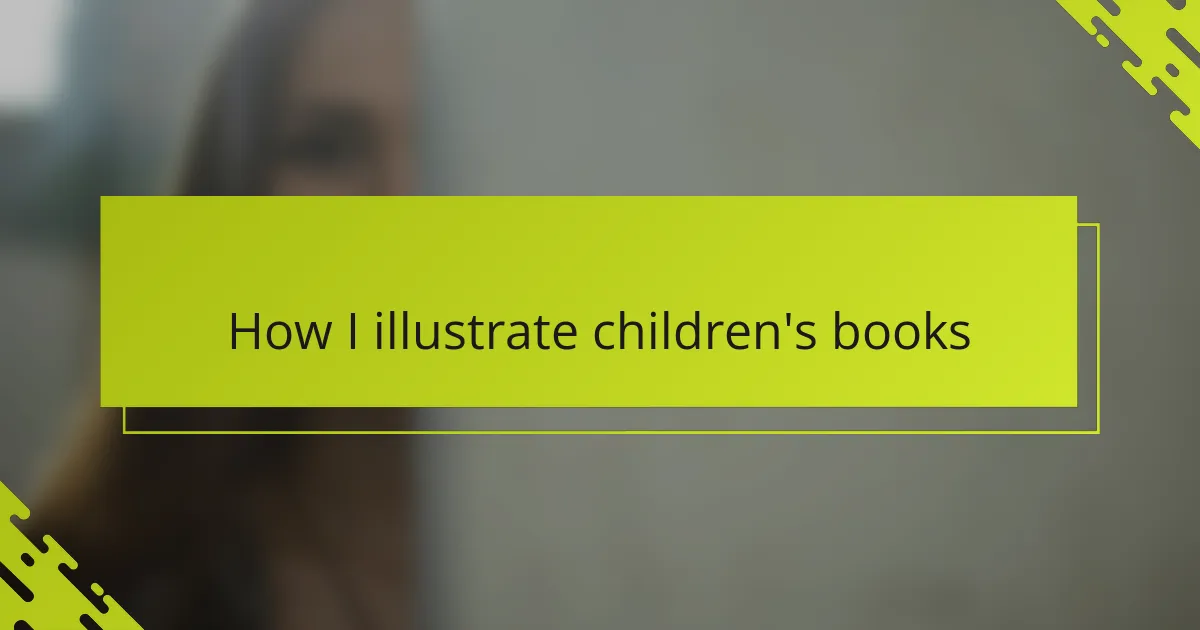Key takeaways
- Children’s book illustration captures emotions and imagination, often resonating more deeply than text alone.
- Inclusive character design embraces diversity and representation, allowing all children to see themselves in stories.
- Thoughtful incorporation of cultural symbols fosters connection and respect, enhancing the narrative’s emotional depth.
- Balancing storytelling and visuals enriches the reading experience, making illustrations integral to the narrative.
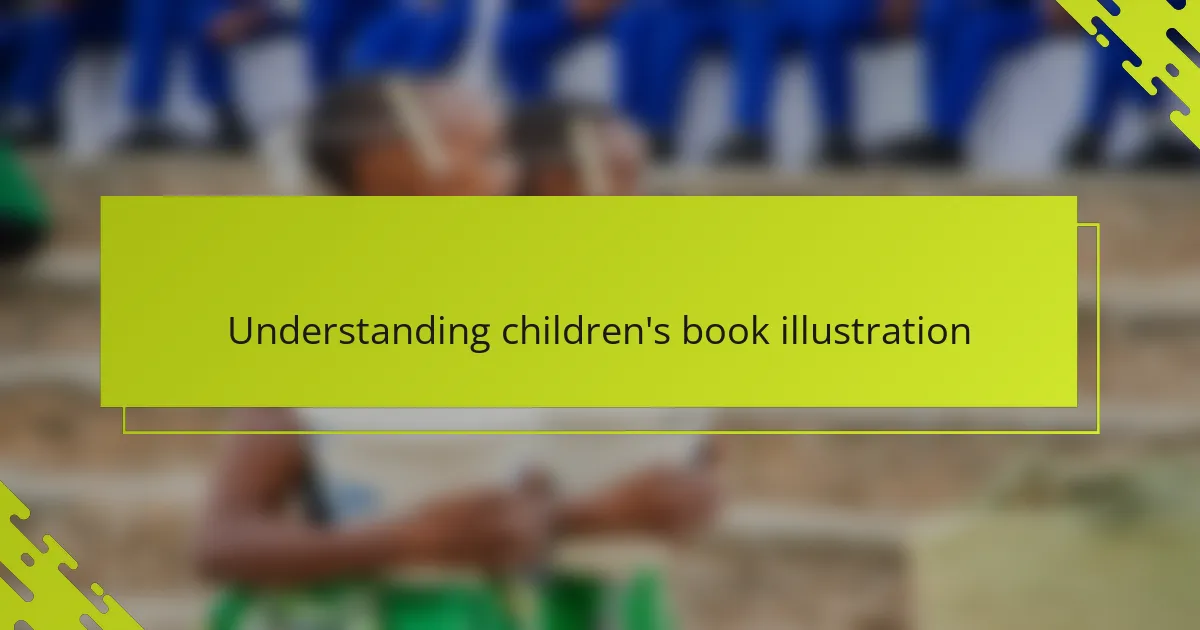
Understanding children’s book illustration
Children’s book illustration is not just about drawing cute pictures; it’s about capturing the essence of a story and making it accessible to young minds. When I first started illustrating, I realized how crucial it is to understand a child’s perspective—the way they see colors, shapes, and emotions. Have you noticed how a simple sketch can ignite a child’s imagination more than words alone?
Illustrations serve as a bridge between text and emotion. They don’t just complement the story; they create an emotional rhythm that guides a child through the narrative. I’ve found that when a character’s feelings jump off the page through expressive lines or vibrant palettes, the story becomes more alive and memorable.
For me, understanding children’s book illustration means constantly asking: what will resonate with a child’s heart and mind? It’s a dance between simplicity and depth, where every color choice and stroke holds meaning. This insight keeps me grounded in the delicate craft of storytelling through images.
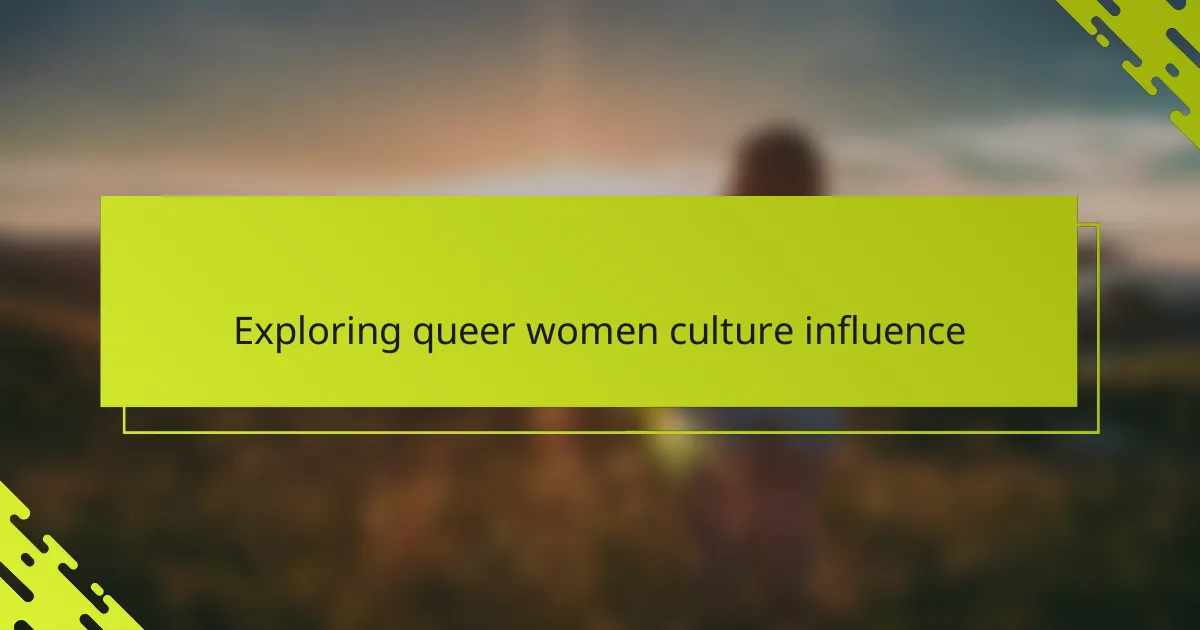
Exploring queer women culture influence
Queer women culture has deeply influenced how I approach my illustrations, infusing them with layers of identity and resilience that often go unseen. Have you ever thought about how representation shapes a child’s sense of belonging? I’ve noticed that weaving subtle cues from queer culture into my art creates a quiet space for children to see themselves reflected, even if they can’t yet put it into words.
There’s a beautiful strength in the stories shared within queer communities—stories of courage, love, and exploration—that inspire the characters I bring to life. I remember illustrating a scene where two characters held hands, and I chose to depict their connection with colors and patterns drawn from queer symbolism. That small detail felt like a powerful act of inclusion, one that added emotional truth beyond the narrative.
By exploring queer women culture, I’m constantly reminded that children’s books are not just about fantasy or fun, but also about nurturing empathy and understanding. How can I better honor these rich histories and diverse voices in each stroke of my brush? It’s a question that keeps evolving as I grow both as an illustrator and as part of this vibrant community.
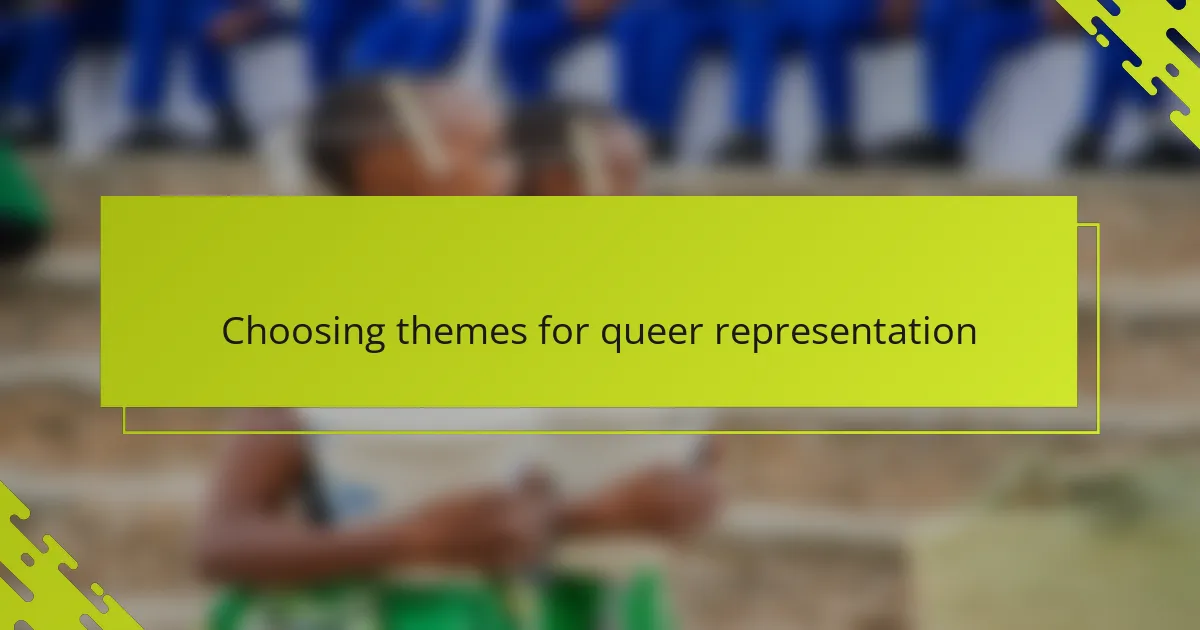
Choosing themes for queer representation
Choosing themes for queer representation means selecting stories that reflect the realities and joys of queer lives without reducing them to stereotypes. I often ask myself: which experiences will feel authentic to children growing up queer or questioning their identity? It’s important that these themes offer both visibility and hope, showing diverse families, friendships, and love in gentle, affirming ways.
Sometimes I draw from personal moments—like recalling a childhood when I didn’t see anyone like me in books—and use that to shape themes of belonging and self-discovery. This reflection helps me choose narratives that resonate emotionally, allowing children to feel seen and understood even if their story isn’t told aloud. Have you ever thought about how much power lies in simply being recognized?
At other times, I focus on universal themes through a queer lens: kindness, bravery, or finding community. These themes invite all children, not just queer kids, to connect and empathize. I believe this approach fosters inclusion naturally, weaving queer representation into everyday stories rather than marking it as “other.” Isn’t that how true representation should feel—effortless and life-affirming?
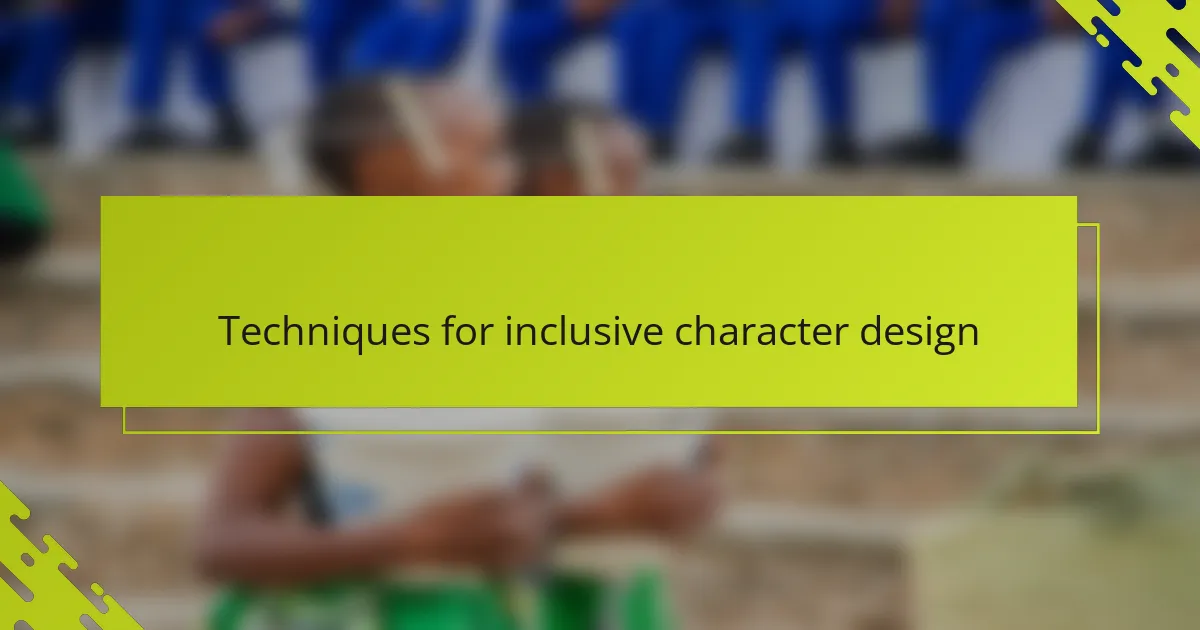
Techniques for inclusive character design
When designing inclusive characters, I pay close attention to diverse physical traits—skin tones, body types, and hairstyles—to ensure children of all backgrounds see themselves reflected. Have you ever noticed how a single detail, like a hearing aid or a culturally specific accessory, can quietly amplify a character’s identity without overwhelming the story? These subtle touches invite curiosity and normalize diversity in a gentle, natural way.
I also experiment with gender expression, avoiding traditional binaries by blending clothing and features that feel fluid and authentic. This approach challenges stereotypes without preaching, offering children characters who express themselves freely. It reminds me of the joy I felt when a young reader told me, “That character looks like me,” because it affirmed that representation isn’t just about visibility—it’s about validation.
Colors and gestures become powerful tools in inclusive design as well. I use warm, open poses and vibrant palettes to convey acceptance and openness, creating characters that feel welcoming regardless of their background or identity. Isn’t it amazing how illustration can communicate empathy before a single word is read? That’s the magic I strive to capture in every stroke.
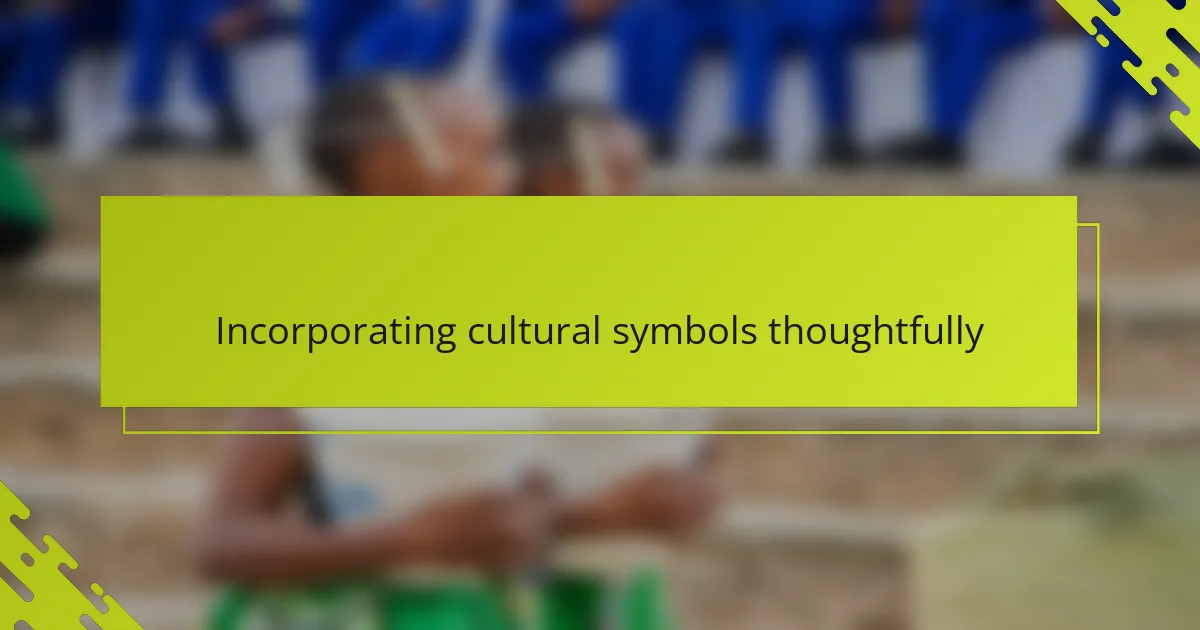
Incorporating cultural symbols thoughtfully
Incorporating cultural symbols thoughtfully means more than just adding pretty patterns or familiar icons; it’s about honoring the stories and meanings behind them. I’ve learned that a symbol isn’t just decoration—it carries layers of history and identity that need respect. Have you ever felt the difference when a cultural detail is included with care versus when it feels tacked on? That intentionality changes everything.
When I include cultural symbols in my illustrations, I make it a point to research their significance deeply, often connecting with community members or diving into firsthand accounts. This process reminds me that cultural expression is living and evolving, not a static image to borrow. For example, integrating a specific textile pattern or color palette taught me how these elements can convey pride, resilience, or belonging in ways words alone sometimes miss.
I also ask myself how children encountering these symbols will respond. Will the symbol open a door to curiosity, respect, and connection, or will it confuse or stereotype? Sometimes, a single emblem or motif becomes a quiet act of representation, inviting children to feel seen within a larger cultural conversation. Isn’t that the true power of thoughtful illustration—to build bridges in small but meaningful ways?
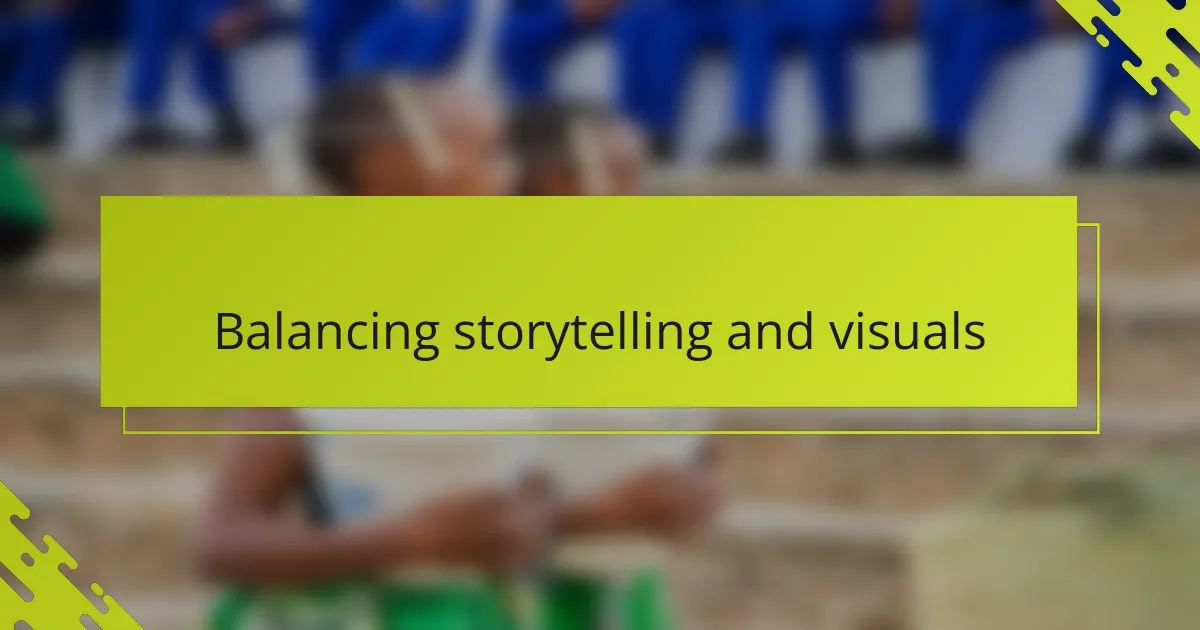
Balancing storytelling and visuals
Striking the right balance between storytelling and visuals is a delicate art. I’ve often found myself asking: does this image carry the story forward, or does it risk overshadowing the words? It’s about crafting illustrations that don’t just decorate the text but deepen the emotional experience, gently leading a child through the narrative without distraction.
Sometimes, a single illustration can say more than pages of text, but only if it captures the story’s heart with clarity and intention. I remember working on a scene where a quiet moment spoke volumes—the way I used light and shadow there wasn’t just about mood, but about inviting readers to pause and feel alongside the characters. That’s when I truly felt the power of balancing visuals and storytelling.
How do I know when I’ve found that sweet spot? It’s often when children point to a picture and tell me their own version of the story or share how a character’s expression mirrors something they’ve felt. Those moments remind me that visuals and words are partners, each enriching the other to create a world where every child can belong and imagine.

Personal experiences as a queer illustrator
One of the most profound experiences I’ve had as a queer illustrator is navigating how my identity shapes not just what I create, but how I see the world through my art. Have you ever noticed that certain moments—small gestures, colors, or expressions—carry a deeper meaning when they come from a place of lived experience? For me, those moments become bridges offering authenticity and connection to readers who might otherwise feel invisible.
Sometimes, drawing from my own queer journey feels like both a challenge and a gift. I recall illustrating a character who was quietly exploring their identity, and as I brought that tenderness to life on the page, I felt a wave of vulnerability mixed with pride. It’s in these instances that my personal story seeps into the illustration, inviting children to feel seen without needing words to explain.
I often wonder, how do my illustrations resonate with queer kids who may not yet have the language or confidence to express themselves? This question pushes me to imbue my work with subtle cues and affirming visuals that speak directly to their hearts. These aren’t just images; they’re quiet affirmations that say, “You belong here, exactly as you are.”
